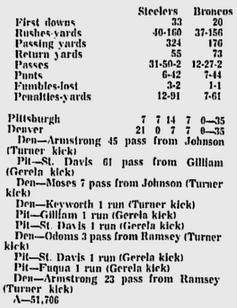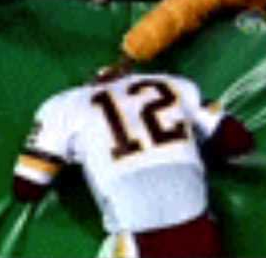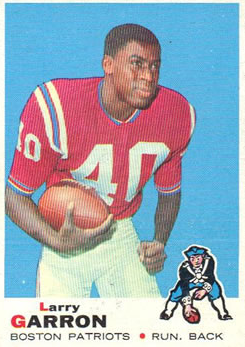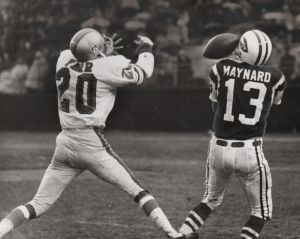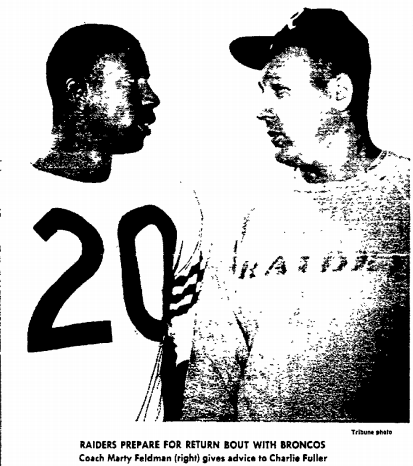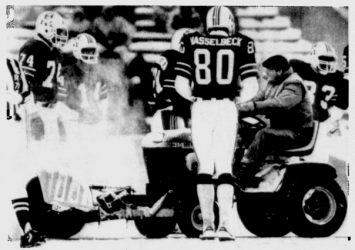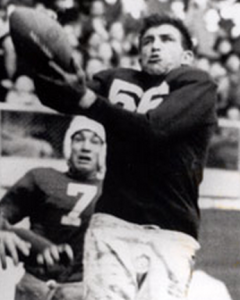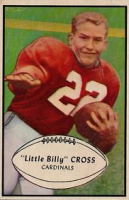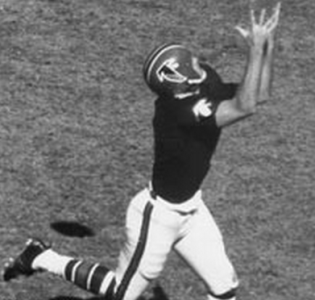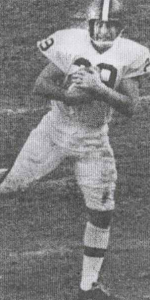One thing you never want to do in the NFL, funny as this might sound, is beat a team by too many points — by, like, 50 or more. The Falcons had that opportunity against the Bucs in Week 3, building a 56-0 lead through three quarters, and you could see they wanted no part of it. They basically said, “No mas,” put in backup quarterback T.J. Yates (who generously threw a pick-six) and gladly settled for a 56-14 win.
I say “gladly” because, well, look at the historical record. You’d think a 50-point margin would mean there’s a sizable gap between the two clubs. It’s the kind of blowout you might get if, oh, an expansion team had to play the defending Super Bowl champs in its NFL debut. (But only if the defending champs were total bullies.)
And yet, five times since 1940 a club that’s been clobbered by 50 or more points has beaten its clobberer the next time they met — either later the same year or the following season. (Hell hath no fury like a team that’s been annihilated.) Stunning, no? After all, there have been only 23 losses of this magnitude in the last 75 years, playoffs included; so we’re talking about 1 in 5 odds, roughly, that the squashed-like-a bug club will get immediate payback.
Heck, it almost happened last season. In 2012, you may recall, the Cardinals dropped a 58-0 squeaker to the Seahawks, committing eight turnovers and failing to advance beyond Seattle’s 37-yard line. As stinkers go, it was sulfur dioxide. But in Week 16 last year, in the Cards’ second meeting with the ’Hawks since the Great Embarrassment, they upset the Super Bowl winners-to-be, 17-10, at CenturyLink Field — Seattle’s only loss in its last 20 home games.
Without further ado, then, here are, arguably, the Five Greatest Extractors of Revenge in modern pro football history:
● 1977 Falcons — In the next-to-last game of ’76, the Los Angeles Rams steamrolled them 59-0 at the Coliseum (and outgained them by nearly 500 yards, 569-81). The Falcons — and their Grits Blitz defense — got even in the ’77 opener in Atlanta, handing the Rams a 17-6 defeat. The L.A. quarterback that day: Joe Namath. Margin of first game: 59. Point swing between the two games: 70.
● 1981 Packers — Late in the ’80 season, the Bears hammered them 61-7 at Soldier Field, the most one-sided game ever between the two ancient rivals. When the Pack returned to Chicago in Week 1 of ’81, they turned the tables on the Bears, 16-9. Margin of first game: 54. Point swing: 61.
● 1990 Houston Oilers — The feud in the ’80s and ’90s between Bengals coach Sam Wyche and Oilers counterpart Jerry Glanville was one of the most entertaining of all time. Wyche considered Glanville “probably the biggest phony in professional football,” and Jerry’s feelings toward Sam weren’t much warmer. So when Cincinnati got the chance near the end of the ’89 season, it poured it on Houston, onside kicking with a huge lead, booting a needless field goal in the final seconds and burying the Oilers 61-7 at Riverfront Stadium. The next time the clubs crossed paths, the following season in the Astrodome, Glanville was no longer in Houston. (He’d moved on to Atlanta and been replaced by Jack Pardee.) Too bad. He missed seeing Warren Moon toss five touchdown passes in a 48-17 rout of Wicky Wacky’s Bengals. Margin of first game: 54. Point swing: 85.
● 1979 Jets — In the second game of the season, the explosive Patriots pummeled the Jets 56-3 in Foxborough as Steve Grogan threw for TDs of 49, 37, 50, 44 and 28 yards. The rematch at Shea Stadium produced a much different result: a 27-26 Jets win that killed the Pats’ playoff chances. Margin of first game: 53. Point swing: 54.
● 1989 Steelers — Everything went wrong for Pittsburgh in its opener, a 51-0 loss to the Browns at Three Rivers Stadium. It gave the ball away eight times, managed just 53 offensive yards and watched in horror as the Cleveland defense scored three touchdowns (two on fumbles, one on an interception). Five weeks later, the Steelers rebounded to beat the Browns on the road 17-7, thanks to seven takeaways of their own. Margin of first game: 51. Point swing: 61.
Others of note:
● 1954 Baltimore Colts — It wasn’t just that the Rams obliterated the Colts 48-0 in Week 1 (in Baltimore, no less); it was that their first score, an 80-yard bomb from Norm Van Brocklin to Skeet Quinlan, came on a now-illegal Hideout Play. Quinlan stayed on the Los Angeles sideline until just before the snap, then stepped inbounds and darted downfield, uncovered.
The teams met again in L.A. in December. There wasn’t much to play for except pride; both were out of the championship hunt. The Colts had a little extra incentive, though, and avenged their earlier stomping, 22-21, on a late field goal. (I’d love to see Artie Donovan’s bar bill after that one.) Margin of first game: 48. Point swing: 49.
● 1981 49ers — In ’80, when the Niners were still a work in progress (and Steve DeBerg was still their quarterback), the Cowboys crushed them 59-14 in Dallas. But the next year, with Joe Montana at QB and rookie cornerback Ronnie Lott terrorizing receivers, San Francisco broke the Cowboys’ hearts twice at Candlestick Park — 45-14 in the regular season and 28-27 in the NFC title game – en route to winning the Super Bowl. Margin of first game: 45. Point swing: 76.
Finally, there are the 1961 Detroit Lions. Can’t forget about them. They got ambushed 49-0 in Week 3 when the 49ers unleashed their innovative Shotgun offense. In the Week 8 sequel, however, the Lions rose up in all their fury and . . . tied the Niners in San Francisco, 20-20. Ask yourself: Has there been a more satisfying deadlock in the annals of the game? Margin of first game: 49. Point swing: Ditto.
Source: pro-football-reference.com

